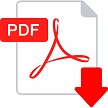MODELS AND FUNCTIONS OF THE CONTROL MECHANISM COST EFFECTIVENESS OF INNOVATIVE DEVELOPMENT ENTERPRISES IN THE COMPLEX OF ECONOMIC FACILITIES KNOWLEDGE: ORGANIZATIONAL DESIGN METHODS
A. A. Alabugin
South Ural State University, Chelyabinsk, Russia
e-mail: alabugin.aa@ mail.ru
Abstract. Organizational design of processes of functioning of the mechanism forеsight-controlling with the expected controlling properties of regulation of stability of development of the enterprises is caused by requirements of economy in the conditions of the growing uncertainty of the environment. Improvement of quality of regulation of profitability is directed to improvement of interaction of the enterprises with complex objects. Combination of design approach to development of the mechanism with processes of organizational design of procedures of its assessment and adjustment is necessary. Therefore, the research objective determined development of methods of organizational design of the decision-making processes defining structures, functions of coordination and control of results of regulation of parameters of quality of the mechanism of forеsight-controlling. The scientific novelty of a research is presented by the following methods: combination of design and process approaches to improvement of quality of interaction in a complex; development of the theory of management in the concept of combination of the principles of functioning of mechanistic and organic models of organizational design of the mechanism; formation of digital simulators of regulators of the mechanism according to the principles of integration and combination of approaches. The concept differs in new opportunities of use of the mechanism of forеsight-controlling. Preventive assessment of influences of regulators by results of monitoring of indicators of profitability in a zone of sustainable innovative development of the enterprise for criterion of a compromise of the purposes of profitability and innovation, centralization and specialization of processes of functioning is provided. On the basis of the developed standards of quality of regulation and reliability of their forecasts the following practical results at the enterprise object of a research are received: the algorithmic scheme of development and realization of digital model of organizational design and functioning of the mechanism of forеsight-controlling is created; the adjustability of processes of increase in profitability by specialized criteria of stability of development at stages of an innovative cycle of the enterprise is provided; the assessment of the actual indicators of quality on the basis of examination of initial parameters of quality of regulation is carried out; by results of mathematical modeling of the digital simulator of the mechanism of forеsight-controlling recommendations about correction of planned and target indicators of quality of formation of development strategies taking into account factors of economy of knowledge are developed; organizational and behavioural and economic indicators of strategy of functioning of an object with use of the mechanism of forеsight-controlling are defined. Continuation of researches is supposed in the directions of improvement of systems of post-industrial agglomeration of the region and country with use of mechanisms of forеsigh-controlling in complexes of organizational and power technological purpose. Monitoring of factors provides combination of resources of low carbon and “green” power that promotes transformation of grounds of waste as a part of a complex in power sources and zones of absorption of carbon dioxide.
Key words: organizational design, forеsight-controlling, regulation of quality and profitability of development, principles of combination of models of organizational design.
Cite as: Alabugin, A. A. (2022) [Models and functions of the control mechanism cost effectiveness of innovative development enterprises in the complex of economic facilities knowledge: organizational design methods]. Intellekt. Innovacii. Investicii [Intellect. Innovations. Investments]. Vol. 4, pp. 26–41, https://doi.org/10.25198/2077-7175-2022-4-26.


























